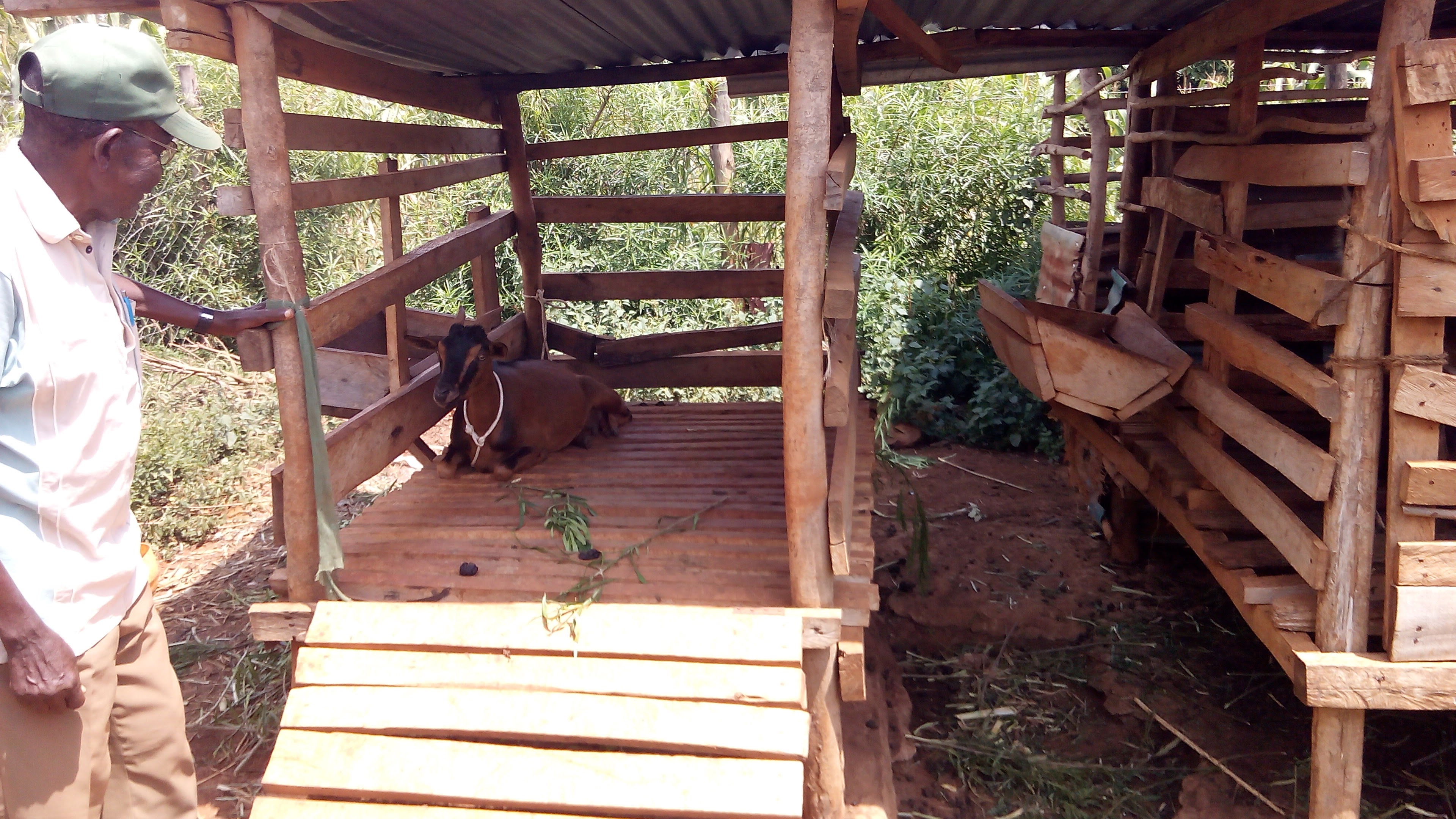Practical steps towards starting dairy goats farming in Kenya

If you are interested in starting dairy goat farming these are the practical steps to follow. Know that unlike local goats, dairy goats are bred for milk production and can produce up to 10 times that of the locals. They multiply fast, kidding twice a year often producing twins or triplets. The quality of milk and the prices are higher than a cow’s milk.
You require only a half hectare of Elephant (nappier) grass (penisetum puperum) to support five dairy goats. Establish a source of fodder by planting or buying fodder locally. Fodder should make the bulk of goat feed. Supplement feeds such as Legume species commonly used as pasture or fodder in Kenya like Calliandra, Leucaena, Desmodium, grains and milling by-products, minerals, and molasses provide essential nutrients, such as protein, energy and minerals, to support milk production. If possible grow fodder shrubs around the edges of the plot. The fodder should be able to last a whole year. Other feeds include maize stover, sweet potato vines, banana peels and weeds. Preserve feeds when in surplus in form of Hay, dried fodder legumes, leaves and maize stover.
Before buying and moving your goats, consult with the nearest veterinary or livestock office for Which breed of dairy goats should I keep? and information on vaccinations against contagious caprine pleuropneumonia (CCPP), pulpy kidney, tetanus and orf.
Construct a good goat house, with good ventilation, feed and water troughs.
Feeding the goats
Ensure you are feeding sufficient forage and supplements for high level of milk production.
Provide roughages (like Napier grass) and supplements. Napier grass should be chopped into approximately 3-cm-long pieces. Energy supplements include molasses, cereals or milling by-products (bran, pollard). Protein supplements include cotton seed cake, Calliandra leaves, Leucaena leaves, sweet potato vines, Desmodium, fishmeal and dairy meal.
A simple supplement can be made at home. Here ia an example of a sample ration for dairy goats. For every 6 scoops of whole cereal grains, add half a scoop of fishmeal or any of the following: cotton seed cake, Calliandra leaves, Leucaena leaves, sweet potato vines or Desmodium. Finally add a tablespoonful of mineral mixture. Mix well before feeding.
Increase supplement by ½ kg per day during the last month of pregnancy. When in milk, allow ½ kg of supplement for every 3 litres of milk produced.
Breeding
Identify a good breeding male goat which has no deformities, with two well-developed testicles, strong feet and legs, good body condition and high libido. Libido is observed by the ability of the male to vigorously detect and mate with females on heat. These qualities will ensure successful mating.
One male is needed for every 25 females. This male can be communally owned provided sexually transmitted diseases and other communicable diseases such as brucellosis are controlled.
Mate females two months after kidding. Introduce a male and leave it with the female goats for 2 to 3 weeks. If possible mate all your female goats at the same time to ensure kids are born at the same time and therefore ease management.
Breed females when in good body condition. Select those with a soft udder, two functional teats and strong teeth and legs. Manage reproduction ensuring that first mating should be about 16 months of age because breeding too early can result in weak kids and stunted females.
On average birth occurs 150 days after mating. Watch your goat closely one week before kidding in case of any problems.
Replace breeding animals at 9 years of age or earlier if they fail to become pregnant. Organize for a periodic male exchange program to prevent inbreeding.
Rearing the kids
Ensure the newborn kid suckles immediately after birth. The goat’s first milk helps protect the kid from diseases, gets its digestive system working and is especially nutritious. Disinfect the umbilical cord immediately after birth with iodine solution or diluted disinfectant to avoid infection. House both mother and kid in a dry, well-ventilated and secure house.
Allow half to one litre of milk per day for the kid, depending on size. Wean at 3 months.
Introduce kids to roughage (chopped Napier grass, maize stover) by the second week and supplements (0.25 kg per day) by the fourth week.
Controlling internal and external parasites
Deworm all adults before mating, all females 2 weeks before kidding, kids at weaning (3 months of age), and all animals before the start of the rainy season.
Use recommended sprays, pour-ons and powders to control external parasites such as Fleas, ticks, mites and lice.
Vaccinations
What vaccines do your goats need to be healthy? Vaccinate goats against highly contagious disease goat pneumonia (CCPP), pregnant females against pulpy kidney and tetanus 2 to 3 weeks before kidding and vaccinate kids at 6 months of age. Vaccinate against orf (scabby mouth disease) at 2 months of age. Orf can affect goat handlers therefore wear protective clothing, such as overalls, when handling your goats and wash your hands well with soap and water afterwards.
Marketing
Local markets are readily available for goat’s milk. Obtain market information on demand for goat’s milk or create demand by telling people about benefits of goat’s milk. Try local hospitals, children’s homes and individual households. You can make added-value products such as cheese, maziwa mala or yoghurt.
You can also sell goats for profits which are currently very marketable and high in demand.



Comments
RSS feed for comments to this post